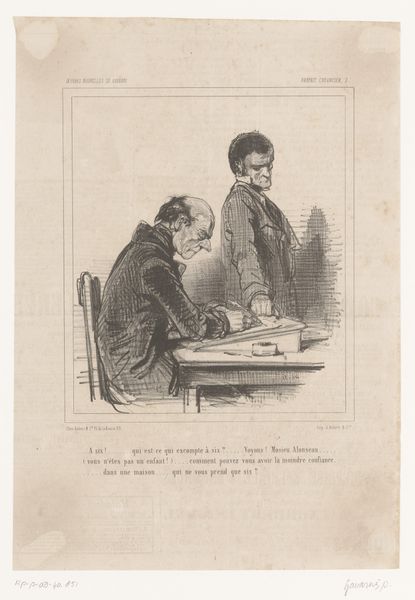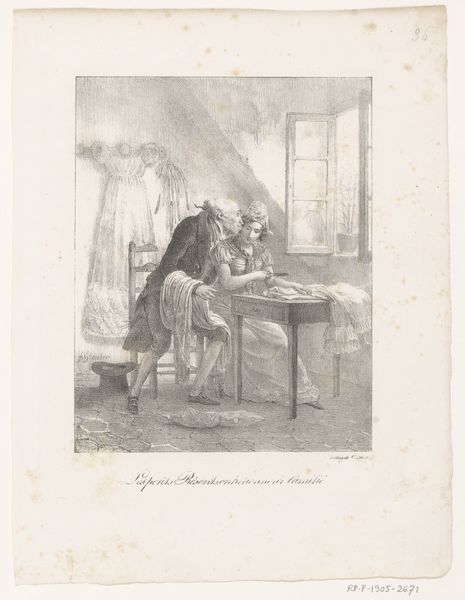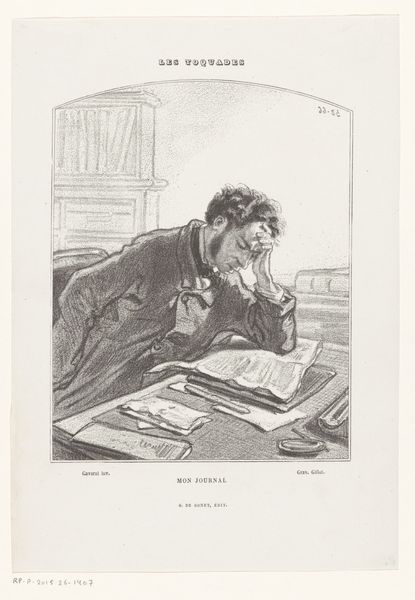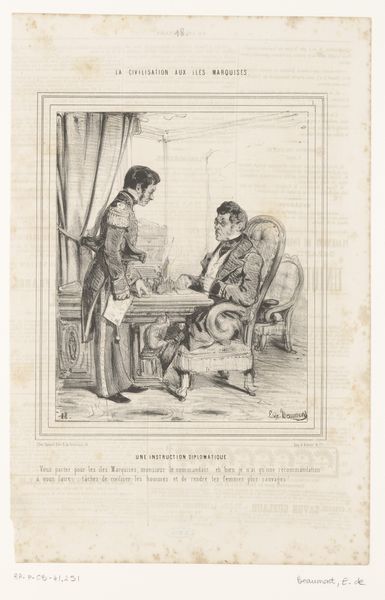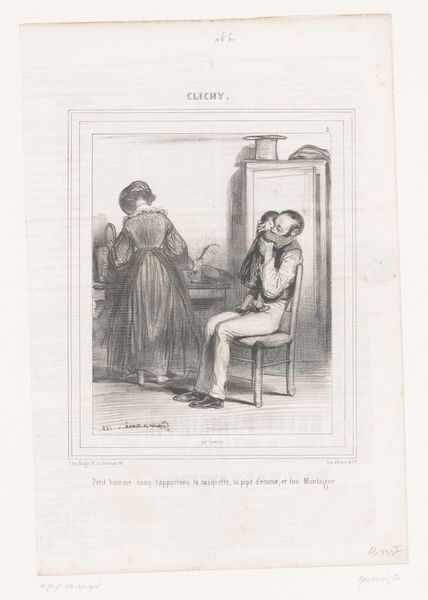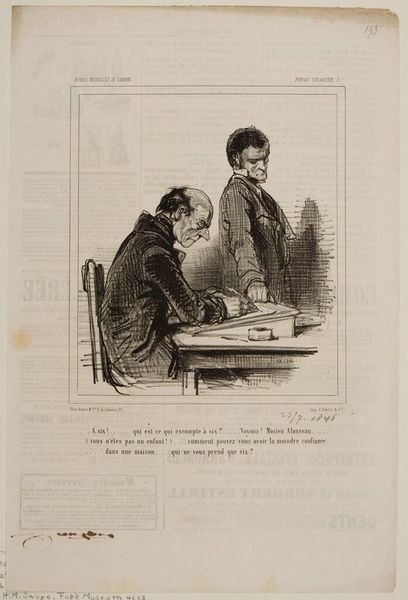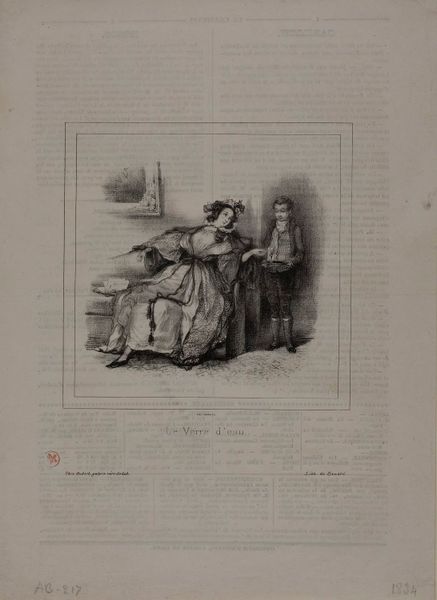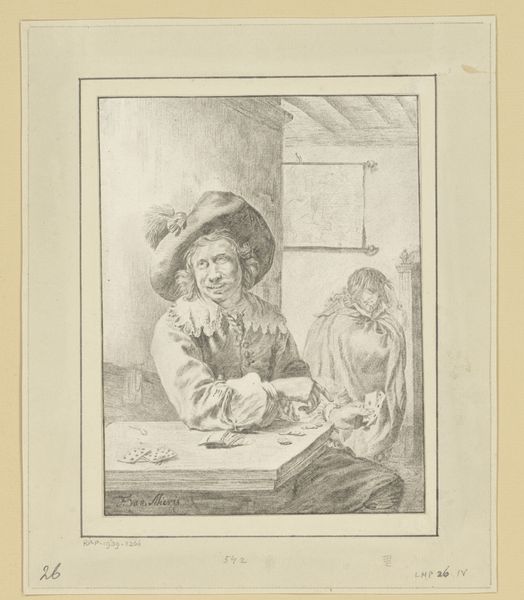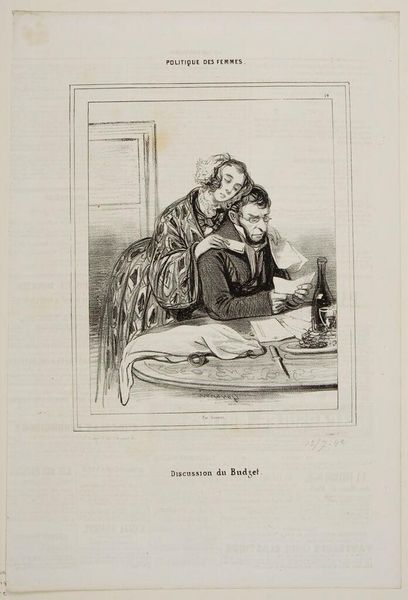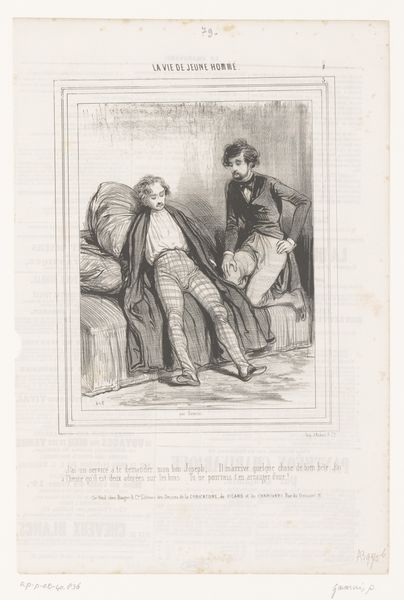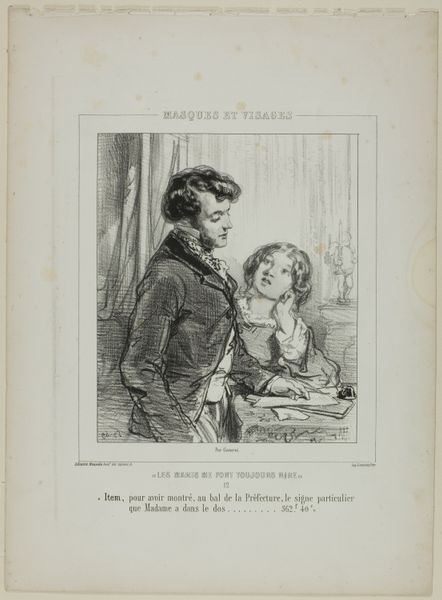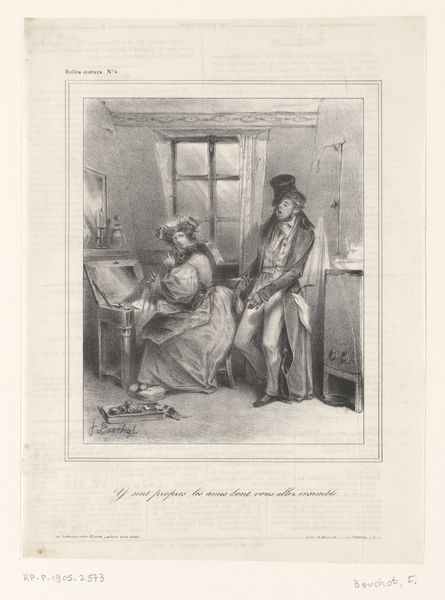
print, engraving
#
portrait
#
narrative-art
# print
#
caricature
#
old engraving style
#
figuration
#
romanticism
#
line
#
genre-painting
#
engraving
Dimensions: height 363 mm, width 237 mm
Copyright: Rijks Museum: Open Domain
Curator: Oh, look, this is "Vrouw overhandigt haar echtgenoot facturen," or "Woman handing invoices to her husband," created by Paul Gavarni in 1842. It’s currently held here at the Rijksmuseum. An engraving capturing a marital scene. Editor: Right away, the composition feels unbalanced, doesn’t it? The wife looms over the husband, literally and metaphorically pressing down on him with what I can only imagine are demands for more funds. I am immediately experiencing vicarious embarrassment from both partners, like stumbling into the silent aftermath of conflict. Curator: Exactly! The density of detail surrounding the man, the bills, the wine... it traps him. Notice how the romantic lines of the woman's attire contrast against the regimented lines of the man’s suit and desk: The romantic meets the rational. Editor: Ah, the line work is particularly interesting here. It uses incredibly dense hatching and cross-hatching, mostly in the service of form. You can really sense the volume and shape in their faces. The woman’s hair and dress have an elegant, almost extravagant quality compared to the dark lines in her spouse’s visage that create so much negative space and a palpable sense of being haunted. Curator: You see Gavarni's mastery there. His contemporary audience would have read this image immediately; The title of the print series that this engraving appeared in was ‘La Politique des Femmes’, where Woman becomes the locus point to which power can shift within social and political life. There is even an asymmetry on her face, to me highlighting inner turmoil with an underlying agency and strength. The fact that his name is nowhere to be found says everything about male fragility, at least according to Paul Gavarni! Editor: It also brings to mind questions about gender and domestic roles—ideas circulating during the 19th century which are crystallized within its formal structure! Gavarni's piece makes these struggles visually compelling as much as psychologically intimate through formal construction rather than sentimentality alone! I also note how the use of black-and-white evokes the emotional tension, creating sharp contrast which serves as an index to each protagonist and of their shared experience. Curator: Precisely, so much to discover! It makes you wonder what narrative exists within the piece, almost forcing you into the drawing room. Editor: An astute observation of interpersonal relationships and of class struggle to examine from an unexpected angle—one that I will definitely consider further.
Comments
No comments
Be the first to comment and join the conversation on the ultimate creative platform.
